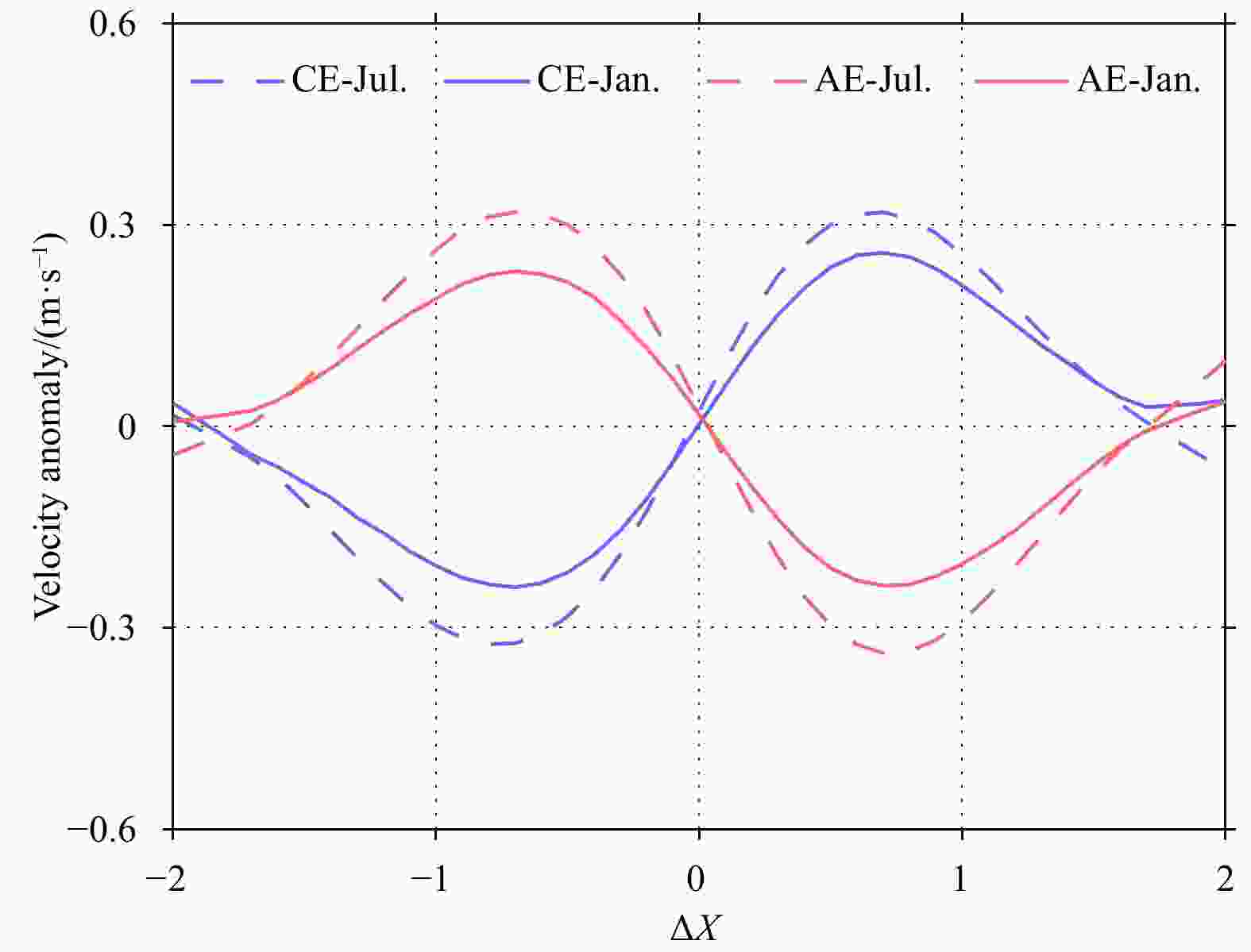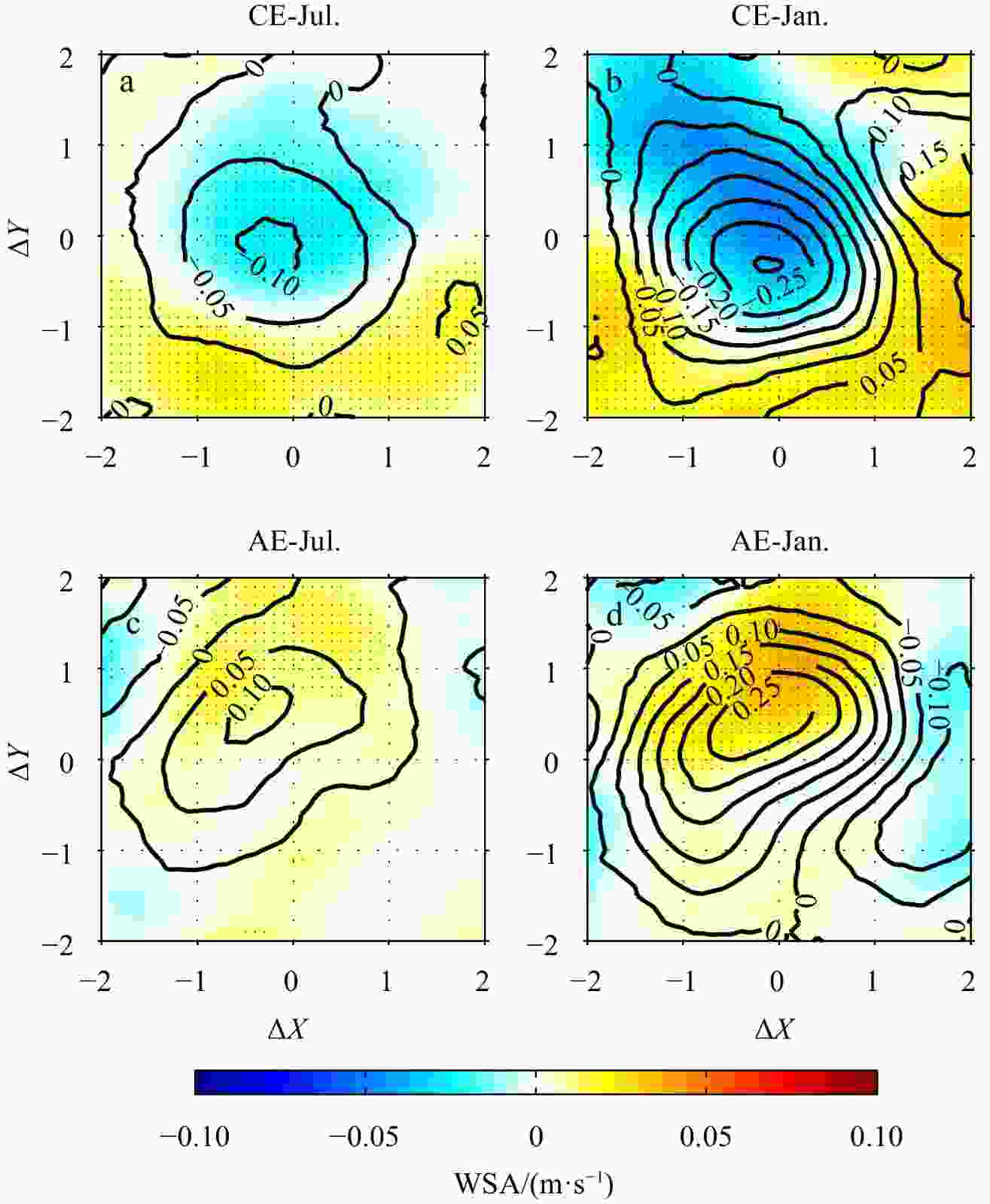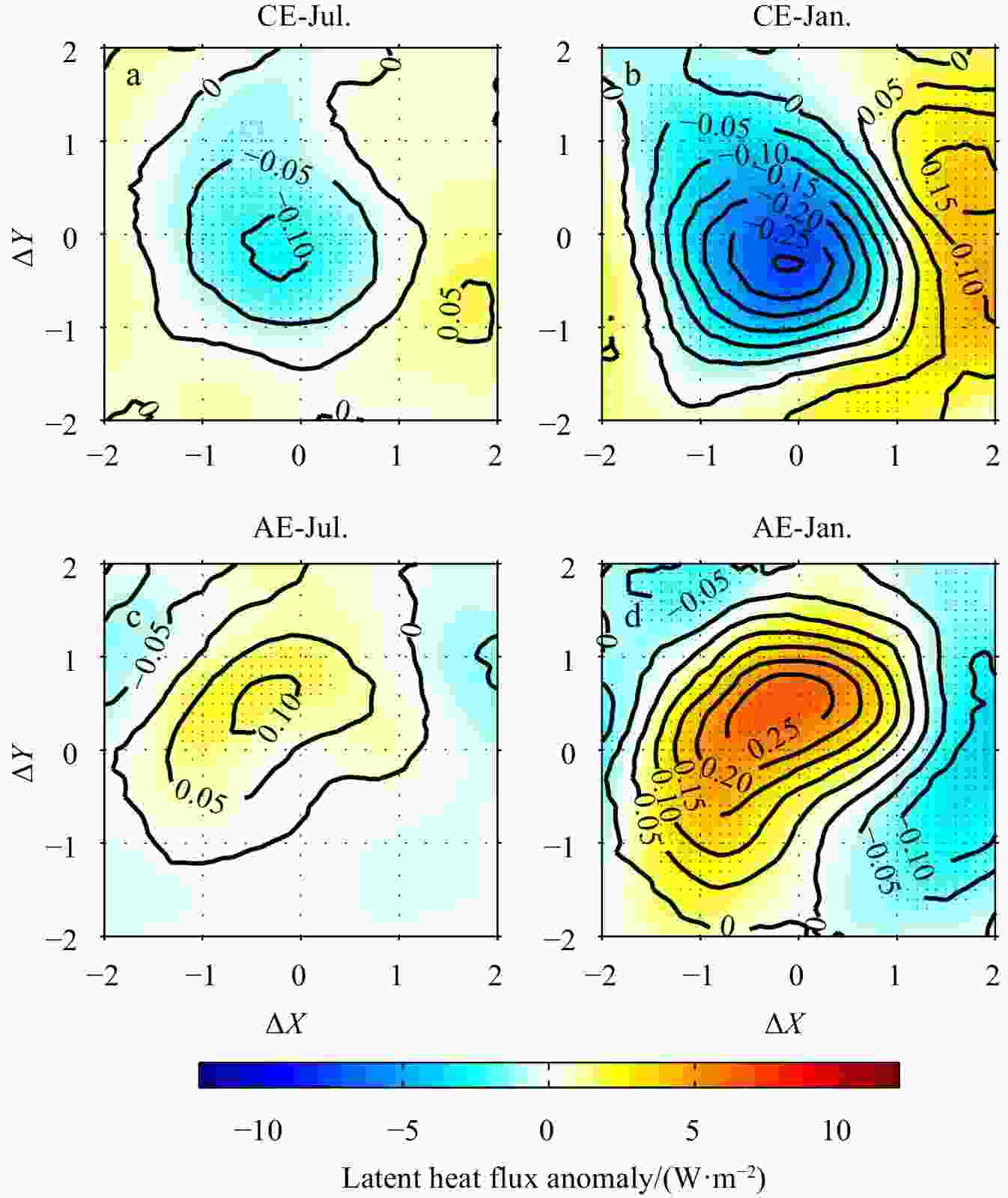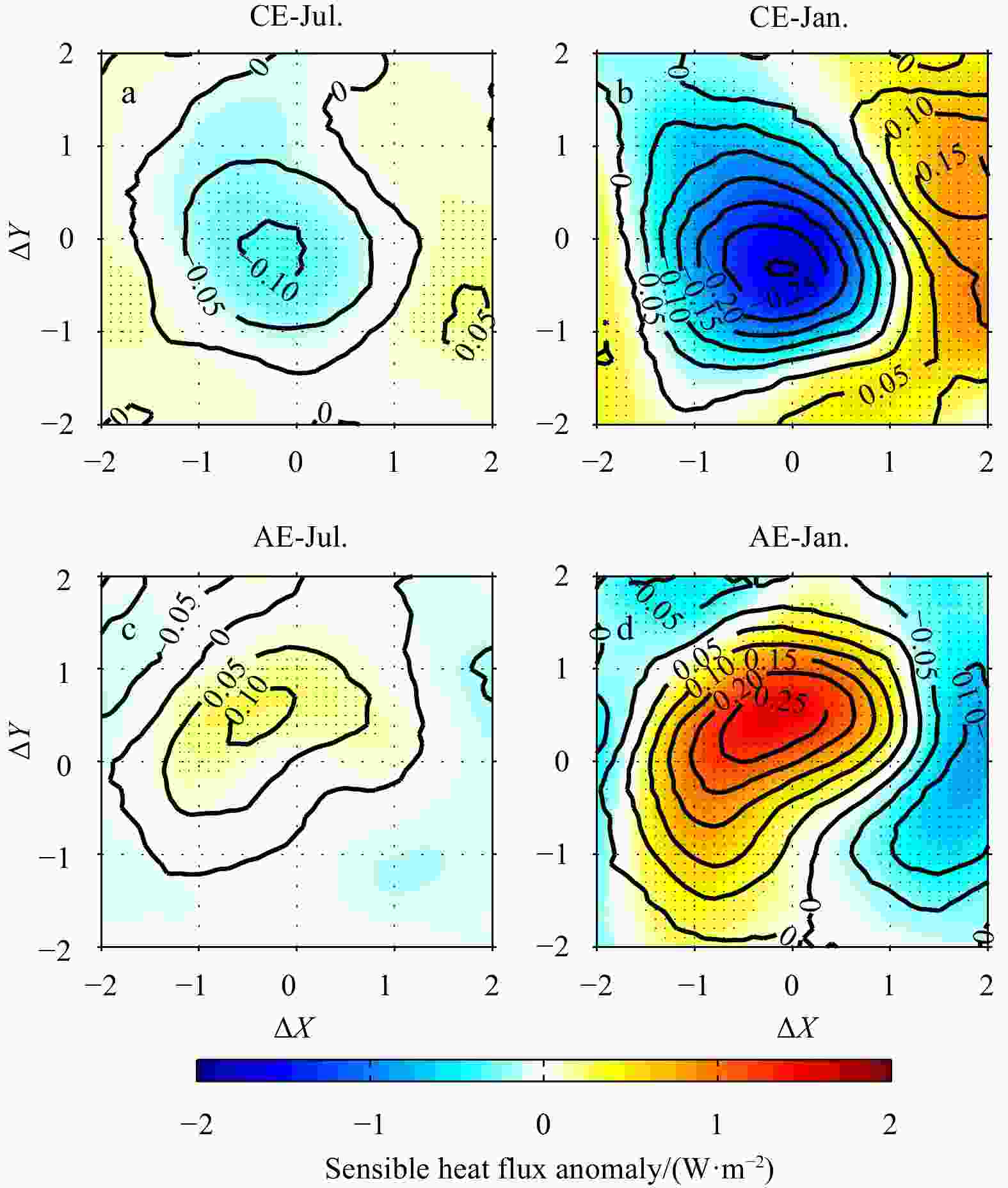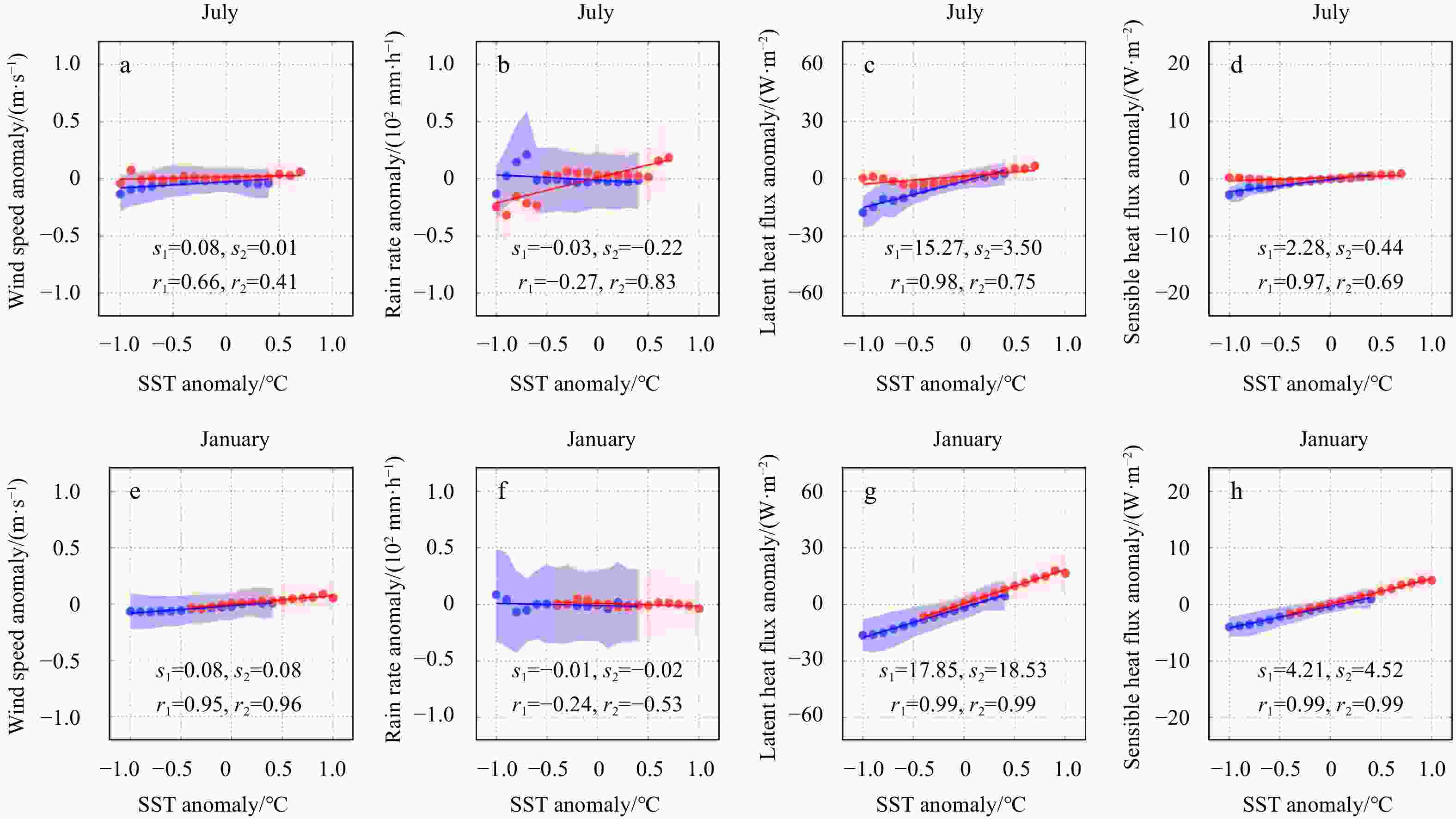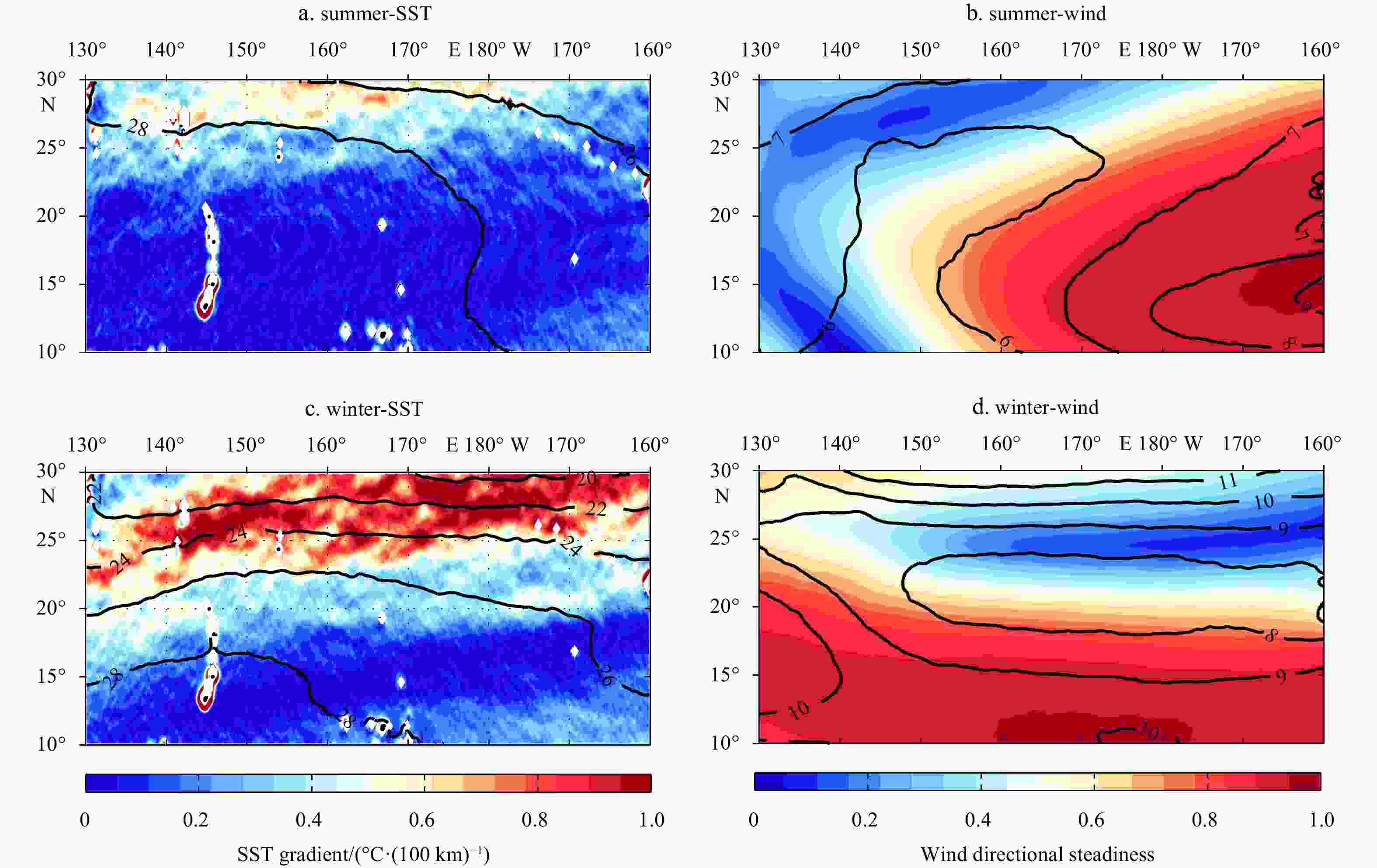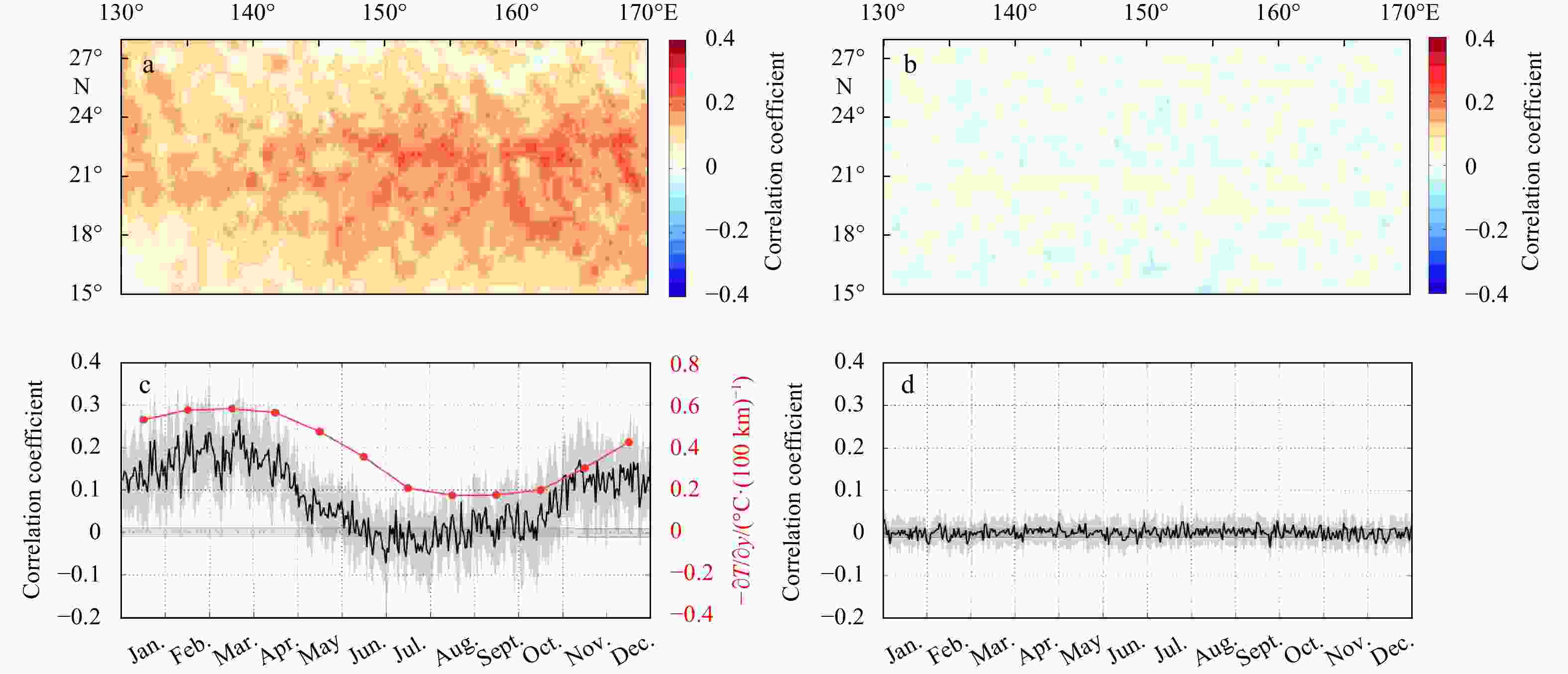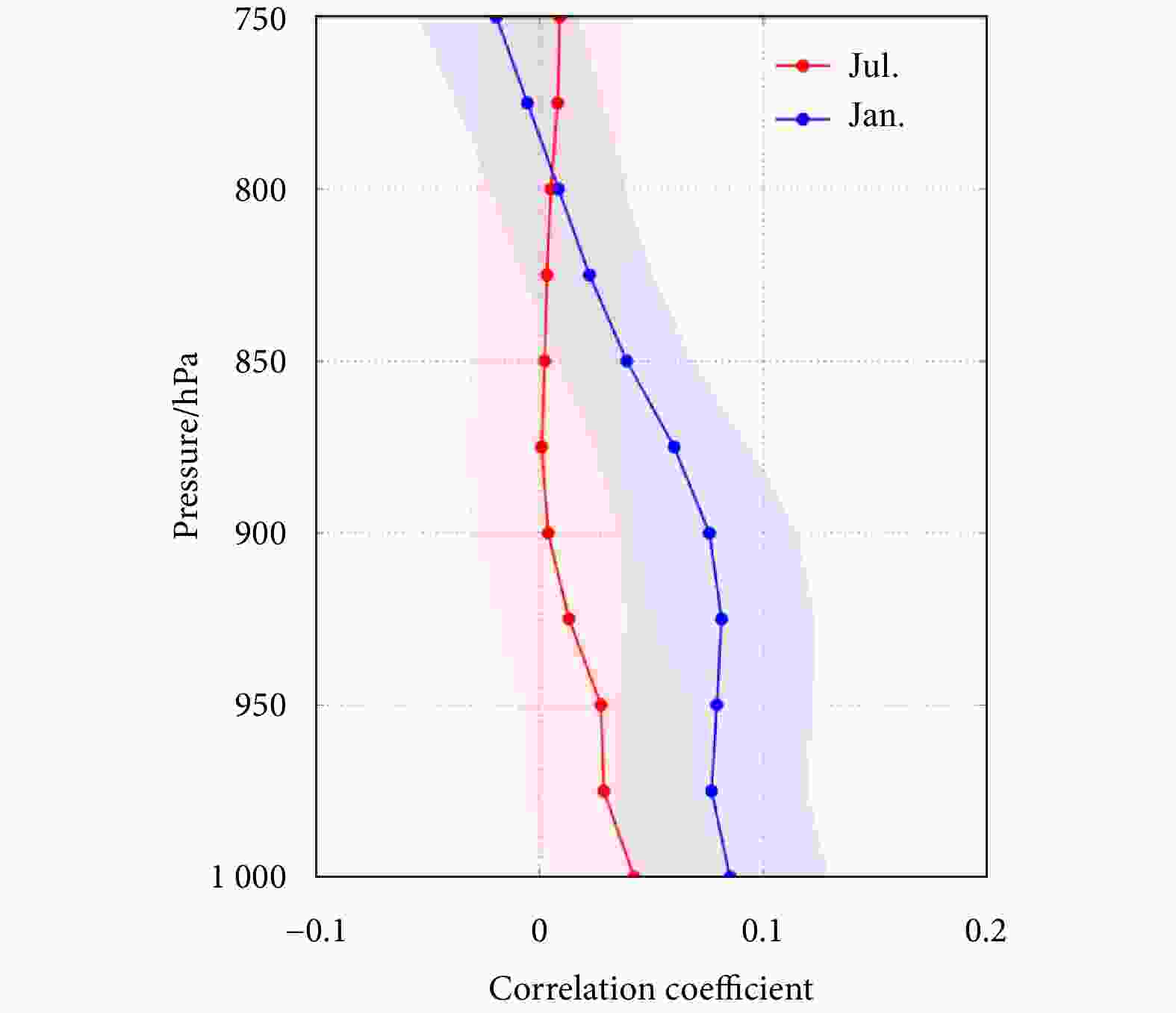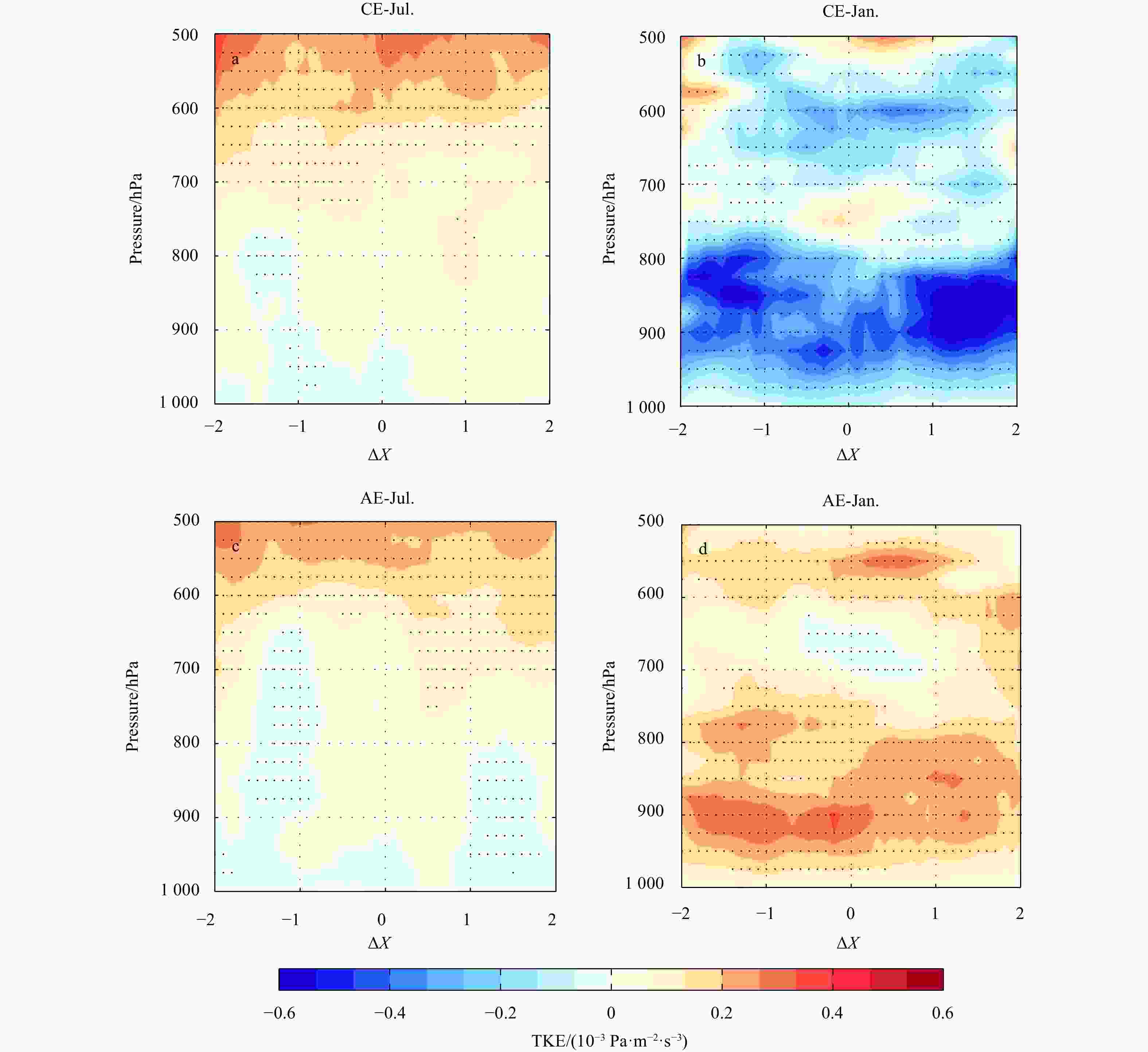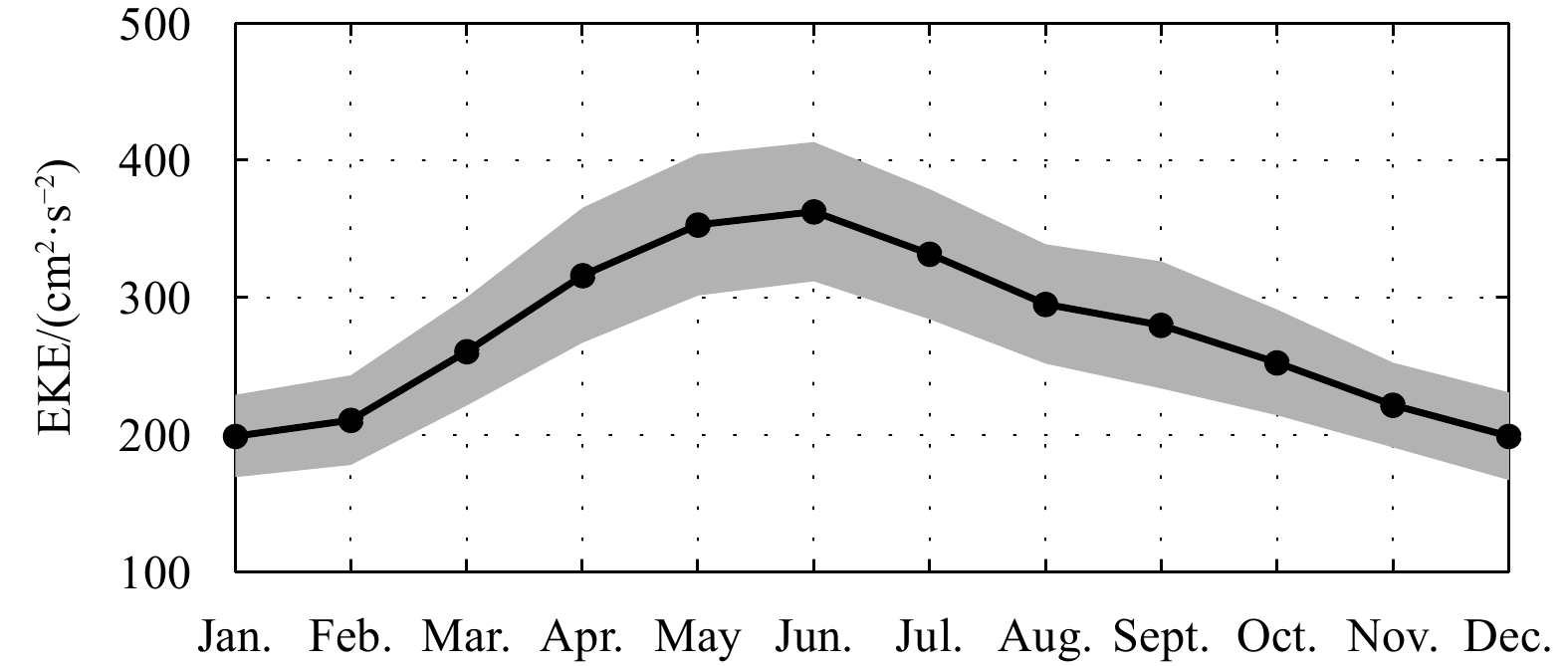Seasonal variation of atmospheric coupling with oceanic mesoscale eddies in the North Pacific Subtropical Countercurrent
-
Abstract: This study investigated the seasonal variation in the atmospheric response to oceanic mesoscale eddies in the North Pacific Subtropical Countercurrent (STCC) and its mechanism, based on satellite altimetric and reanalysis datasets. Although mesoscale eddy in the study area is more active in summer, the sea surface temperature (SST) anomaly associated with mesoscale eddies is more intense and dipolar in winter, which is largely due to the larger background SST gradient. Similarly, the impact of the oceanic eddy on sea surface wind speed and heat flux is strongest in winter, whereas its effect on precipitation rate is more significant in summer. The study revealed that the SST gradient in STCC could impact the atmosphere layer by up to 800 hPa (900 hPa) in boreal winter (summer) through the dominant vertical mixing mechanism. Moreover, the intensity of the SST gradient causes such seasonal variation in mesoscale air-sea coupling in the study region. In brief, a stronger (weaker) background SST gradient field in wintertime (summertime) leads to a larger (smaller) eddy-induced SST anomaly, thus differently impacting atmosphere instability and transitional kinetic energy flux over oceanic eddies, leading to seasonal variation in mesoscale air-sea coupling intensity.
-
Figure 2. Seasonal variation of eddy SST anomaly (color shading) and sea surface height (SSH) anomaly (contours; unit: cm; interval: 3 cm) structures. Upper (bottom) panels are for cyclonic (anticyclonic) eddies. The left panels are for July and the right are for January. The dotted areas mean the t-test is passed at a 95% confidence level.
Figure 8. Correlations between SST anomaly and atmospheric variable anomaly for cyclonic (blue) and anticyclonic (red) eddies, respectively. Blue (red) shading is the standard deviation for cyclonic (anticyclonic) eddy. Variables from left to right panels: sea surface wind speed anomaly, rain rate anomaly, latent heat flux anomaly, and sensible heat flux anomaly. The slope (s1, s2) of straight lines and correlation coefficients (r1, r2) between SST anomaly and atmospheric parameters overlying the mesoscale eddies are listed at the bottom of each panel. (s1, r1) are for cyclonic eddies, and (s2, r2) are for anticyclonic eddies. The anomalous variables are obtained from the pre-filtered parameters within the scope of eddies.
Figure 10. Temporal (upper panel) and spatial (lower panel) correlation coefficients between wind divergence item and downwind SST gradient (a, c) and SST Laplacian (b, d) item. A 10-m wind field is used. The monthly average magnitude of the mesoscale temperature gradient (MTG) is represented as red circles and curve in c, and gray shading in c and d is the standard deviation of spatial correlation coefficient.
-
Chaigneau A, Gizolme A, Grados C. 2008. Mesoscale eddies off Peru in altimeter records: Identification algorithms and eddy spatio-temporal patterns. Progress in Oceanography, 79(2–4): 106–119, Chelton D B, Schlax M G, Samelson R M. 2007. Summertime coupling between sea surface temperature and wind stress in the California Current System. Journal of Physical Oceanography, 37(3): 495–517. doi: 10.1175/JPO3025.1 Chelton D B, Schlax M G, Samelson R M. 2011. Global observations of nonlinear mesoscale eddies. Progress in Oceanography, 91(2): 167–216. doi: 10.1016/j.pocean.2011.01.002 Chelton D B, Xie S P. 2010. Coupled ocean-atmosphere interaction at oceanic mesoscales. Oceanography, 23(4): 52–69. doi: 10.5670/oceanog.2010.05 Desbiolles F, Alberti M, Hamouda M E, et al. 2021. Links between sea surface temperature structures, clouds and rainfall: Study case of the Mediterranean Sea. Geophysical Research Letters, 48(10): e2020GL091839. doi: 10.1029/2020gl091839 Dong Changming, McWilliams J C, Liu Yu, et al. 2014. Global heat and salt transports by eddy movement. Nature Communications, 5: 3294. doi: 10.1038/ncomms4294 Feng Ling, Liu Chuanyu, Köhl A, et al. 2021. Four types of baroclinic instability waves in the global oceans and the implications for the vertical structure of mesoscale eddies. Journal of Geophysical Research: Oceans, 126(3): e2020JC016966. doi: 10.1029/2020JC016966 Frenger I, Gruber N, Knutti R, et al. 2013. Imprint of Southern Ocean eddies on winds, clouds and rainfall. Nature Geoscience, 6(8): 608–612. doi: 10.1038/ngeo1863 Frenger I, Münnich M, Gruber N, et al. 2015. Southern Ocean eddy phenomenology. Journal of Geophysical Research: Oceans, 120(11): 7413–7449. doi: 10.1002/2015jc011047 Gaube P, Chelton D B, Samelson R M, et al. 2015. Satellite observations of mesoscale eddy-induced Ekman Pumping. Journal of Physical Oceanography, 45(1): 104–132. doi: 10.1175/jpo-d-14-0032.1 Hayes S P, McPhaden M J, Wallace J M. 1989. The influence of sea-surface temperature on surface wind in the eastern equatorial Pacific: Weekly to monthly variability. Journal of Climate, 2(12): 1500–1506. doi: 10.1175/1520-0442(1989)002<1500:TIOSST>2.0.CO;2 He Yinghui, Feng Ming, Xie Jieshuo, et al. 2021. Revisit the vertical structure of the eddies and eddy-induced transport in the Leeuwin Current system. Journal of Geophysical Research: Oceans, 126(4): e2020JC016556. doi: 10.1029/2020JC016556 Huang Jing, Zhang Yang, Yang Xiuqun, et al. 2020. Impacts of North Pacific subtropical and subarctic oceanic frontal zones on the wintertime atmospheric large-scale circulations. Journal of Climate, 33(5): 1897–1914. doi: 10.1175/JCLI-D-19-0308.1 Ji Jinlin, Ma Jing, Dong Changming, et al. 2020. Regional dependence of atmospheric responses to oceanic eddies in the North Pacific Ocean. Remote Sensing, 12(7): 1161. doi: 10.3390/rs12071161 Lambaerts J, Lapeyre G, Plougonven R, et al. 2013. Atmospheric response to sea surface temperature mesoscale structures. Journal of Geophysical Research: Atmospheres, 118(17): 9611–9621. doi: 10.1002/jgrd.50769 Lindzen R S, Nigam S. 1987. On the role of sea surface temperature gradients in forcing low-level winds and convergence in the tropics. Journal of the Atmospheric Sciences, 44(17): 2418–2436. doi: 10.1175/1520-0469(1987)044<2418:OTROSS>2.0.CO;2 Liu Haoya, Chen Shumin, Li Weibiao, et al. 2019. Atmospheric response to oceanic cold eddies west of Luzon in the northern South China Sea. Atmosphere, 10(5): 255. doi: 10.3390/atmos10050255 Liu Yu, Dong Changming, Guan Yuping, et al. 2012. Eddy analysis in the subtropical zonal band of the North Pacific Ocean. Deep-Sea Research Part I: Oceanographic Research Papers, 68: 54–67. doi: 10.1016/j.dsr.2012.06.001 Ma Xiaohui, Jing Zhao, Chang Ping, et al. 2016. Western boundary currents regulated by interaction between ocean eddies and the atmosphere. Nature, 535(7613): 533–537. doi: 10.1038/nature18640 Ma Jing, Xu Haiming, Dong Changming, et al. 2015. Atmospheric responses to oceanic eddies in the Kuroshio Extension region. Journal of Geophysical Research: Atmospheres, 120(13): 6313–6330. doi: 10.1002/2014jd022930 Qiu Bo. 1999. Seasonal eddy field modulation of the North Pacific Subtropical Countercurrent: TOPEX/Poseidon observations and theory. Journal of Physical Oceanography, 29(10): 2471–2486. doi: 10.1175/1520-0485(1999)029<2471:SEFMOT>2.0.CO;2 Qiu Bo, Chen Shuimin. 2010. Interannual variability of the North Pacific Subtropical Countercurrent and its associated mesoscale eddy field. Journal of Physical Oceanography, 40(1): 213–225. doi: 10.1175/2009JPO4285.1 Ramp S R, Colosi J A, Worcester P F, et al. 2017. Eddy properties in the Subtropical Countercurrent, western Philippine Sea. Deep-Sea Research Part I: Oceanographic Research Papers, 125: 11–25. doi: 10.1016/j.dsr.2017.03.010 Schlax M G, Chelton D B. 2008. The influence of mesoscale eddies on the detection of quasi-zonal jets in the ocean. Geophysical Research Letters, 35(24): L24602. doi: 10.1029/2008gl035998 Small R J, deSzoeke S P, Xie S P, et al. 2008. Air-sea interaction over ocean fronts and eddies. Dynamics of Atmospheres and Oceans, 45(3–4): 274–319, Sun Shuangwen, Fang Yue, Zu Yongcan, et al. 2020a. Seasonal characteristics of mesoscale coupling between the sea surface temperature and wind speed in the South China Sea. Journal of Climate, 33(2): 625–638. doi: 10.1175/jcli-d-19-0392.1 Sun Bowen, Liu Chuanyu, Wang Fan. 2019. Global meridional eddy heat transport inferred from Argo and altimetry observations. Scientific Reports, 9(1): 1345. doi: 10.1038/s41598-018-38069-2 Sun Bowen, Liu Chuanyu, Wang Fan. 2020b. Eddy induced SST variation and heat transport in the western North Pacific Ocean. Journal of Oceanology and Limnology, 38(1): 1–15. doi: 10.1007/s00343-019-8255-1 Sun Jia, Wang Guihua, Xiong Xuejun, et al. 2020c. Impact of warm mesoscale eddy on tropical cyclone intensity. Acta Oceanologica Sinica, 39(8): 1–13. doi: 10.1007/s13131-020-1617-x Xu Lixiao, Xie Shangping, Jing Zhao, et al. 2017a. Observing subsurface changes of two anticyclonic eddies passing over the Izu-Ogasawara Ridge. Geophysical Research Letters, 44(4): 1857–1865. doi: 10.1002/2016GL072163 Xu Lixiao, Xie Shangping, Liu Qinyu, et al. 2017b. Evolution of the North Pacific Subtropical Mode Water in anticyclonic eddies. Journal of Geophysical Research: Oceans, 122(12): 10118–10130. doi: 10.1002/2017JC013450 Xu Quanqian, Xu Haiming, Ma Jing. 2018. Air-sea relationship associated with mesoscale oceanic eddies over the subtropical North Pacific in summer. Chinese Journal of Atmospheric Sciences, 42(6): 1191–1207. doi: 10.3878/j.issn.1006-9895.1711.17180 Yang Guang, Wang Fan, Li Yuanlong, et al. 2013. Mesoscale eddies in the northwestern subtropical Pacific Ocean: Statistical characteristics and three-dimensional structures. Journal of Geophysical Research: Oceans, 118(4): 1906–1925. doi: 10.1002/jgrc.20164 Zhan Peng, Guo Daquan, Hoteit I. 2020. Eddy-induced transport and kinetic energy budget in the Arabian Sea. Geophysical Research Letters, 47(23): e2020GL090490. doi: 10.1029/2020gl090490 Zhang Zhiwei, Zhong Yisen, Tian Jiwei, et al. 2014. Estimation of eddy heat transport in the global ocean from Argo data. Acta Oceanologica Sinica, 33(1): 42–47. doi: 10.1007/s13131-014-0421-x Zhu Yannan, Li Yuanlong, Wang Fan, et al. 2022. Weak mesoscale variability in the optimum interpolation sea surface temperature (OISST)-AVHRR-Only Version 2 data before 2007. Remote Sensing, 14(2): 409. doi: 10.3390/rs14020409 Zu Yongcan, Sun Shuangwen, Zhao Wei, et al. 2019. Seasonal characteristics and formation mechanism of the thermohaline structure of mesoscale eddy in the South China Sea. Acta Oceanologica Sinica, 38(4): 29–38. doi: 10.1007/s13131-018-1222-4 -




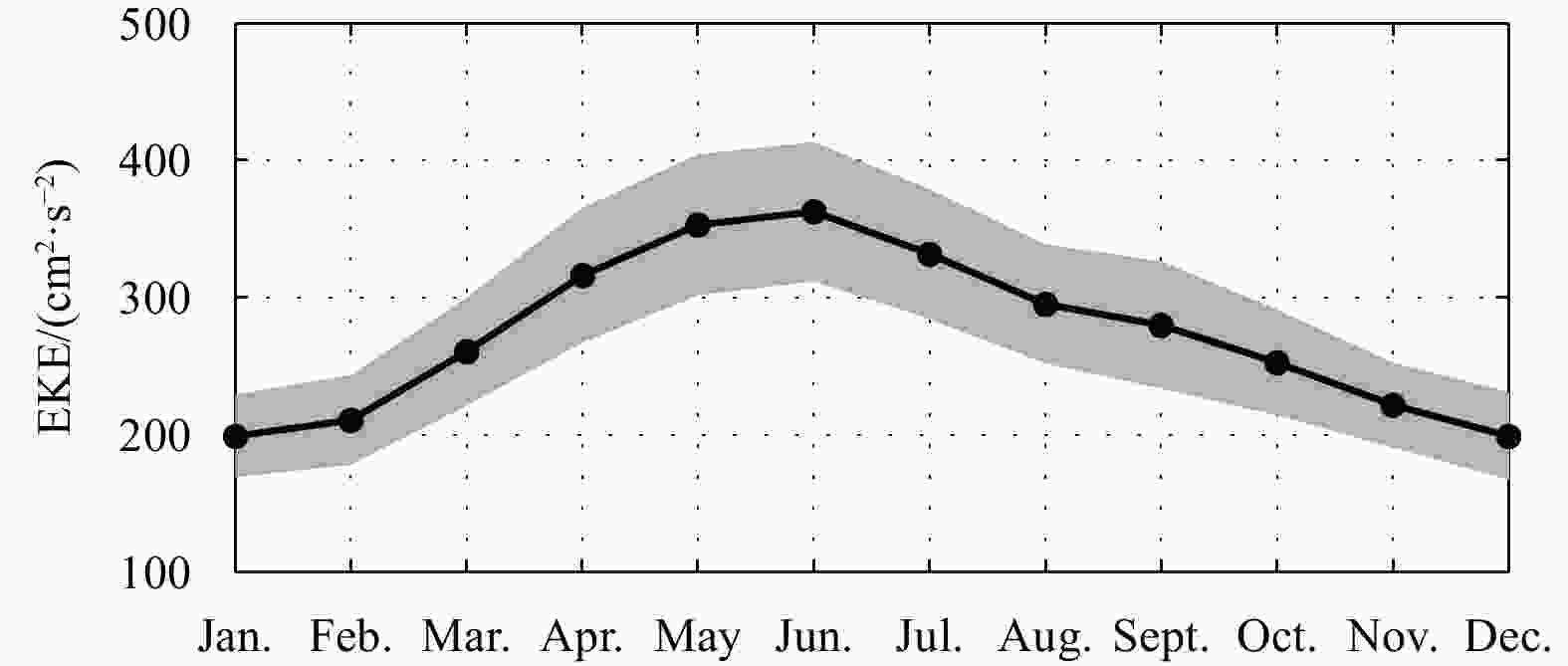
 下载:
下载:

